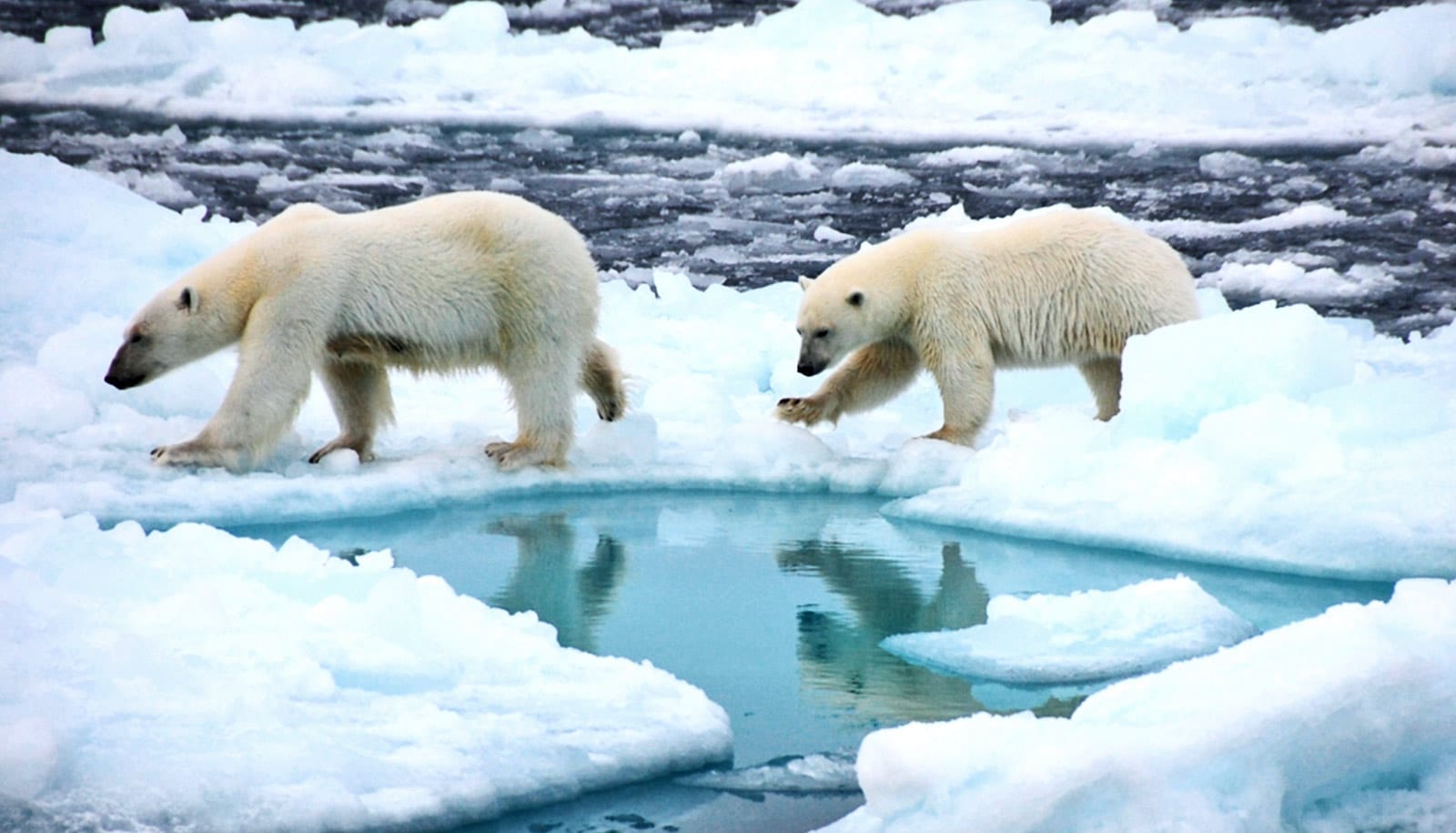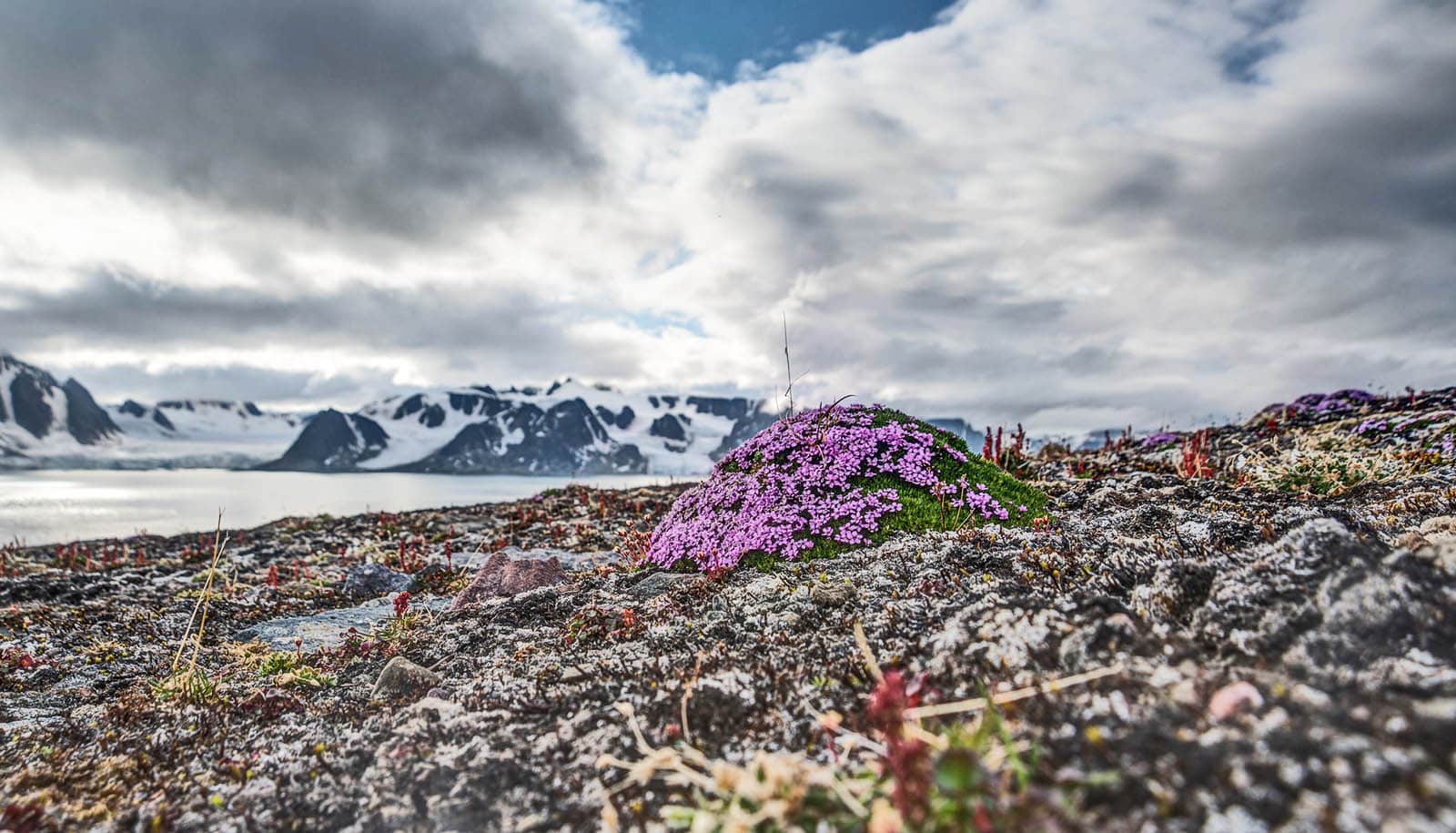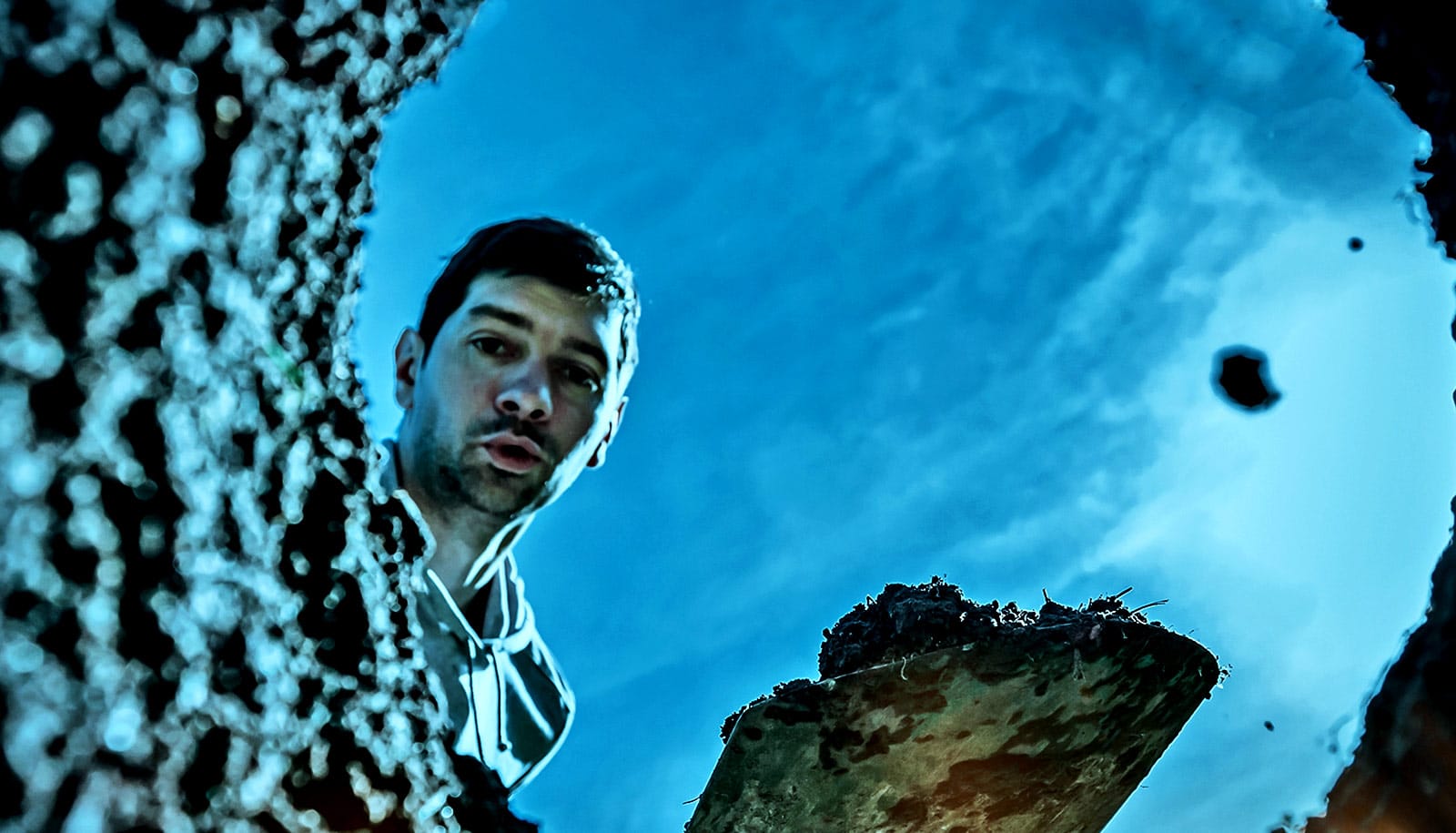
How often the Arctic will lose its sea ice cover in the future critically depends on future CO 2 emissions, a new study shows.(Credit: Dirk Notz)
North Pole will be ice-free in future summers
By 2050, sea ice at the North Pole could be gone, researchers say. But how long the disappearance lasts is up to us.
Summer Arctic sea ice could disappear before 2050, resulting in devastating consequences for the Arctic ecosystem, researchers report.
The efficacy of climate-protection measures will determine how often and for how long, according to their new study.
The North Pole is presently covered by sea ice all year. Each summer, the area of sea ice coverage decreases and grows again in winter. However, as a result of global warming, the overall area of the Arctic Ocean covered by sea ice has reduced rapidly over the past few decades.
According to the researchers, this substantially affects the Arctic ecosystem and climate. The sea ice cover is a hunting ground and habitat for polar bears and seals and keeps the Arctic cool by reflecting sunlight .
“While the Arctic sea ice extent is decreasing during this transition to an ice-free Arctic, the year-to-year variability in extent greatly increases, making life more difficult for local populations and ice-dependent species,” says coauthor Bruno Tremblay, associate professor in the atmospheric and oceanic sciences department of at McGill University.
The study in Geophysical Research Letters analyzes recent results from 40 different climate models. Using these models, the researchers assessed the evolution of Arctic sea ice cover in a scenario with high CO 2 emissions and little climate protection. As expected, summer Arctic sea ice disappeared quickly in these simulations. Surprisingly, they also found that ice disappeared in some simulations where CO 2 emissions were rapidly reduced.
How often the Arctic will lose its sea-ice cover in the future critically depends on future CO 2 emissions , the study shows. If emissions are reduced rapidly, ice-free years only occur occasionally. With higher emissions, the Arctic Ocean will become ice-free in most years.
This tells us that humans still determine how often the Arctic Ocean will be ice-free in the summer, depending on our future level of emissions, says Tremblay.
Support for the research came from from the European Union’s Horizon 2020 Research and Innovation program.
Source: McGill University
The post North Pole will be ice-free in future summers appeared first on Futurity .
Share this article:
This article uses material from the Futurity article, and is licenced under a CC BY-SA 4.0 International License. Images, videos and audio are available under their respective licenses.
Related Articles:
Arctic plants are a missing factor in climate models
Nov. 2, 2022 • futurityTurning CO2 solid could allow underground burial
Nov. 1, 2022 • futurityLinks/images:
- https://www.futurity.org/sea-ice-loss-climate-change-marine-mammals-2212312-2/
- https://www.futurity.org/reflective-surfaces-heat-waves-1667052/
- https://doi.org/10.1029/2019GL086749
- https://www.futurity.org/triassic-extinction-volcanic-emissions-2337132-2/
- https://www.mcgill.ca/newsroom/channels/news/north-pole-will-be-ice-free-summer-321739
- https://www.futurity.org/north-pole-ice-summer-2342932/
- https://www.futurity.org


